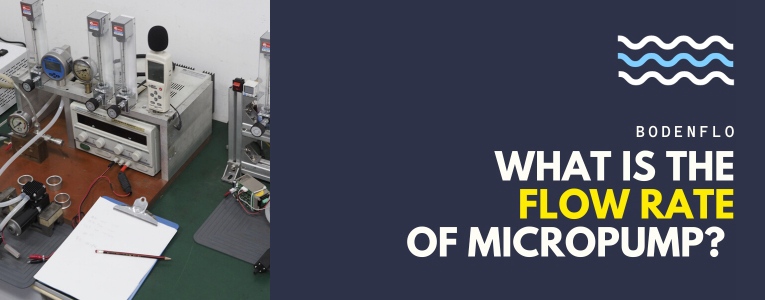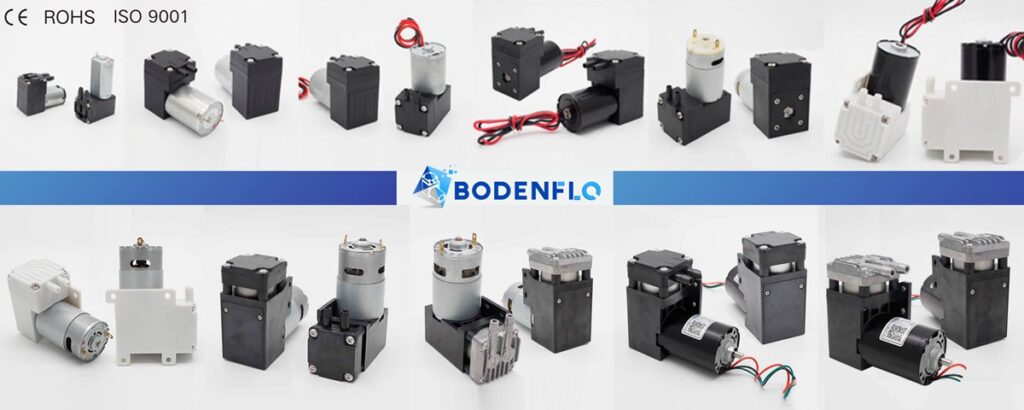
Understanding flow rate is critical when selecting a micropump for various applications. Whether it's for medical equipment, lab analytics, or industrial use, the flow rate can make or break your project.
The flow rate of a micropump refers to the volume of fluid that the pump can move per unit of time. This varies depending on the pump's design, material, and operating conditions.
By the end of this article, you'll have a comprehensive understanding of micropump flow rates and how to select the right pump for your specific needs.
What Factors Affect Micropumps Flow Rate?
When diving into the intricate world of micropumps, understanding the factors that influence flow rate is indispensable. A multitude of variables come into play, each contributing to the pump's performance in moving fluids at a specific rate. In this detailed exploration, we'll unpack these factors to give you a well-rounded view.
Pump Design and Architecture
As mentioned, the foundational design and architectural setup of a micropump significantly determine its flow rate. Whether it's a micro diaphragm pump, micro piston pump, or a peristaltic pump, each has unique characteristics influencing its flow rate. For instance, diaphragm pumps often offer a balance between pressure and flow rate, while piston pumps are known for their high-pressure capabilities but may have varying flow rates.
Material and Fluid Viscosity
The material used in the pump's construction can also be a contributing factor. Certain materials may cause less friction and thus allow a smoother flow. Additionally, the viscosity of the fluid being pumped is crucial. Higher viscosity fluids typically require pumps designed to handle them, often resulting in a different achievable flow rate.
Operating Conditions
External factors such as temperature, altitude, and even electrical supply consistency can impact the pump's flow rate. For example, elevated temperatures might alter the fluid viscosity or even cause certain pump materials to expand, affecting the flowrate adversely.
Integrated Electronics and Control Systems
Some advanced pumps feature electronic control systems that allow for real-time adjustments of the flow rate. These systems can compensate for variations in environmental or operational conditions, ensuring a consistent flow rate that meets the application's requirements.
How to Measure Micro Pump Flow Rate?
Accurate micro pump flow rate measurement is critical for optimizing the performance and efficiency of a micropump. To ensure reliability, specialized instruments and methodologies are commonly employed. Let's delve into the specific approaches and technologies that can be used for precise flow rate measurement.
Types of Measurement Units
As stated, flow rate is commonly measured in units such as milliliters per minute (ml/min) or liters per minute (l/min). The choice of unit largely depends on the scale of your project; for instance, ml/min is generally more suitable for microfluidic applications where minute volumes are involved.
Use of Flow Meters
Specialized flow meters are often the go-to equipment for measuring pump flow rate. These devices are calibrated to offer high levels of accuracy and can be either inline or clamp-on, depending on your application needs. Inline meters are installed directly in the fluid path, while clamp-on meters use ultrasound technology to measure flow rate externally.
Calibration and Validation
Before you begin measurements, it's crucial to calibrate your flow meter. Calibration ensures that your measurements are not only accurate but also repeatable under varying conditions. Some modern flow meters come with automated calibration features, which simplify the process significantly.
Alternative Methods
Though flow meters are the most accurate, other methods like timed volume collection can also be used for ballpark figures. This involves capturing the fluid output over a fixed time period and then calculating the flow rate based on the volume collected.
By employing the right measurement techniques and equipment, you can obtain reliable flow rate data that can be instrumental in fine-tuning your micropump's performance.
Why is Flow Rate Important?
Understanding the significance of flow rate is pivotal for ensuring operational efficiency and safety in various applications. Ignoring or miscalculating the flow rate can lead to a wide range of negative consequences, some of which could be severe. Let's dissect why precise flow rates are so crucial across different industries and applications.
Operational Efficiency
A consistent and accurate flow rate is essential for the smooth functioning of your system. Inefficiency in flow rate can lead to higher operating costs, as pumps may need to work harder or longer to achieve the desired results. This can also result in increased wear and tear, reducing the lifespan of your pump and other related equipment.
Critical Applications
In industries like healthcare or pharmaceuticals, the importance of accurate flow rate is magnified. Inaccurate dosing or fluid transfer can have significant health implications, and in worst-case scenarios, can be life-threatening. For example, in a medical setting where fluids or medications are being pumped into a patient, a miscalculated flow rate could lead to overdosage or underdosage, with severe consequences.
System Reliability
A consistent flow rate ensures that the entire system remains balanced and functional. Discrepancies in flow rate can cause a cascade of issues in interconnected systems, leading to downtime, maintenance challenges, and overall system instability.
Regulatory Compliance
Many industries are governed by strict regulations when it comes to fluid transfer, and accurate flow rates are often a requirement for compliance. Failing to meet these standards can result in hefty fines and legal consequences, not to mention the potential reputational damage.
Can You Adjust the Flow Rate?
The ability to adjust flow rates according to the application's requirements is a feature increasingly found in modern micropumps. This adaptability offers numerous benefits and allows for a more fine-tuned operation. Let's delve into how this functionality works and why it's beneficial for different use-cases.
Advanced Control Systems
Many contemporary micropumps are equipped with advanced control systems, including digital interfaces and microcontrollers. These allow for precise manipulation of the pump's operational parameters, including flow rate. Such control systems enable users to easily vary the flow rate in real-time, offering unparalleled adaptability to fluctuating demands.
Application Versatility
Variable flow rates are particularly beneficial in multi-stage or complex processes, where different flow rates are required at different times. For instance, in chemical dosing or water treatment applications, you might need to adjust the flow rate to match the concentration of substances being mixed. The ability to do so with ease can dramatically enhance operational efficiency and accuracy.
Energy Efficiency
Another advantage of adjustable flow rates is energy conservation. By optimizing the flow rate to exactly what is required for a particular operation, you eliminate energy wastage, contributing to overall sustainability goals and reducing operational costs.
Safety Measures
Variable flow rate functionality often comes with built-in safety features such as alarms or automatic shut-offs that trigger if the flow rate goes beyond or below set thresholds. This adds an extra layer of security, particularly in critical applications where even minor fluctuations could have severe consequences.

What's Unique About BODENFLO Micropumps?
When you're sourcing micropumps for industrial or specialized applications, you're not just looking for generic solutions; you seek innovation, quality, and reliability. At BODENFLO, we're committed to offering just that. Here's how our micropumps stand out in a crowded market.
Customizability
One of the major features that sets BODENFLO miniature pumps apart is our focus on customizability. Our micropumps are parametrically customizable, allowing us to tailor specifications according to your unique requirements. Whether it's high pressure, vacuum, or specific flow rates, we can configure the product to suit your application's specific demands.
Cutting-Edge Technology
Our micropumps are engineered with the latest technological advancements in the field. This ensures not only high performance but also operational efficiency. For example, our pumps with variable flow rates employ advanced control systems, enabling real-time adjustments and higher adaptability to your process needs.
Material Quality and Durability
We understand that the durability of a pump is directly correlated to the materials used in its construction. At BODENFLO, we utilize only the highest quality materials that offer excellent resistance to wear and tear, thereby enhancing the lifespan of the product.
Comprehensive Applications
Our micro flow pumps find applications across diverse industries, ranging from healthcare to water treatment and beyond. Their multifaceted utility is a testament to their robust design and operational flexibility.
Global Footprint
With a client base spanning multiple countries, including Europe, the United States, and beyond, our reach is truly global. We understand the differing needs of various markets and have proven expertise in catering to these varied requirements.
Conclusion
Flow rate is an essential factor when selecting a micropump. With various influencing factors and applications, a thorough understanding is vital for optimal selection. For customizable and reliable micropump solutions, BODENFLO is your go-to manufacturer.


